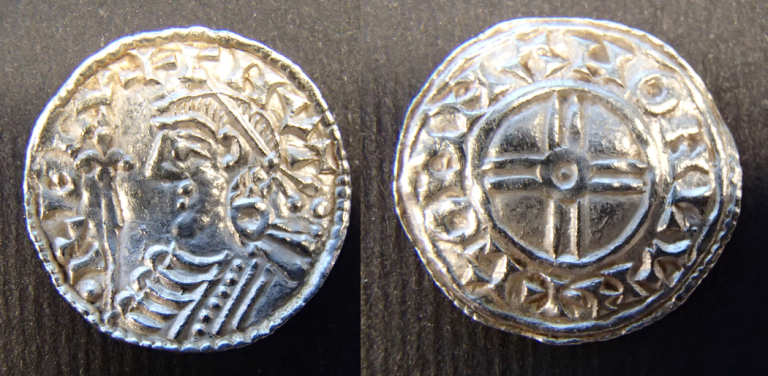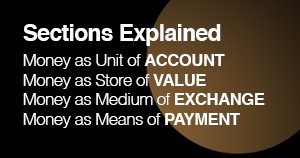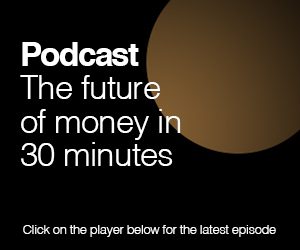Most of us are so used to the concept that saved money grows by earning a positive rate of interest that the idea of negative interest rates comes as a shock.
But it has been tried before. According to Alex Lipton, chief technical officer of Sila Money, negative rates were last in fashion in Europe around a millennium ago.
“In the Middle Ages, negative interest rates were practised on a large scale in the form of so-called ‘demurrage’,” Lipton said during his appearance on the latest New Money Review podcast.
“So it’s not an unknown phenomenon, though it’s very rare.”
Recoining money
Under a demurrage system, the coins used in everyday transactions had to be handed in periodically to be melted down and reissued with a new stamp.
When ‘recoining’ the currency in this way, rulers would deduct a portion of the money as a recoinage charge—effectively a tax for holding the coins.
For example, in Anglo-Saxon England, royal moneyers would give out only three new pennies for every four old ones taken in, according to the late Belgian monetary theorist, Bernard Lietaer. The silver content of the penny coins didn’t change, just their physical form after passing through the mint.
Silver penny of English King Cnut

Source: tenthmedieval.wordpress.com
A typical cycle for recoinage was every six years. If four old coins were traded in for three new ones, the 25 percent reduction in capital value at each recoinage was equivalent to a demurrage charge—a negative interest rate—of roughly 0.35 percent per month.
Most interest rate history is positive
The demurrage experiment stands out against a background of millennia of positive interest rates on money.
Negative rates don’t even get a mention in Homer’s and Sylla’s reference work on the history of interest rates, which records the cost of lending money all the way back to Mesopotamian times, five thousand years ago.
According to Homer and Sylla, the only significant long-term trends in interest rates are those showing the rise and fall of particular civilisations.
“Interest rates in ancient Babylonia, Greece and Rome show, in each case, a progressive decline in interest rates as the nation or culture developed and throve, and then a sharp rise in rates as each ‘declined and fell’,” Homer and Sylla wrote.
But though it may appear a historical oddity, the concept of money that charges you to hold it may be on the verge of reappearing.
Coronavirus brings forward the prospect of negative rates
In the wake of the coronavirus pandemic we are switching rapidly from using physical notes and coins to paying digitally. This offers central banks and governments an unexpected opportunity, explained by Alex Lipton.
“In the presence of cash, there’s a physical lower bound to interest rates, somewhere around -30 to -40 basis points. But if cash is dematerialised and made digital, there’s no lower limit,” he said in the New Money Review podcast.
Recently, the governor of the Bank of England said it would be ‘foolish’ to rule out cutting the cost of borrowing to below zero, a step that could herald a tax on savings held in bank deposit accounts.
Given the economic wreckage brought about by the pandemic, it’s unsurprising that such ideas are being discussed more openly.
There have already been attempts to recreate the medieval demurrage system. During the 1930s economic slump a local community currency in Austria operated with a demurrage charge of 1 percent a month and had immediate benefits. The 12-month experiment was called ‘the Miracle of Wörgl’ as a result.
During the period of Wörgl money’s existence, the city managed to build new houses, a reservoir, a ski jump and a bridge while the rest of the country was mired in unemployment.
How negative rates might work
Anticipating that their bank deposits might start to be taxed via negative rates, savers worldwide have stocked up on high-denomination banknotes, such as the $100 bill, Japan’s 10,000 yen note or Switzerland’s CHF1,000 note.
It’s unclear whether interest rates could become seriously negative if cash were to stick around—otherwise money might continue to flee bank accounts to be hoarded as notes in safe deposit boxes, in sock drawers and underground.
But last year, two economists at the IMF, Ruchir Agarwal and Signe Krogstrup, suggested that negative rates could be made to work even if physical cash continued to be used.
“E-money would be issued only electronically and would pay the policy rate of, and cash would have an exchange rate—the conversion rate—against e-money” Agarwal and Signe Krogstrup said in an IMF blog.
“When setting a negative interest rate on e-money, the central bank would let the conversion rate of cash in terms of e-money depreciate at the same rate as the negative interest rate on e-money. The value of cash would thereby fall in terms of e-money.”
In other words, shops or providers of services would start to quote prices in two separate currencies—cash and e-money—and inflation would be higher for the former.
Radical implications of negative rates
According to Lietaer, if we went back to a system of negative rates, we could expect huge changes in the way money is used.
“Demurrage charges induce a totally different collective behaviour pattern relating to money than that with which we are familiar today,” he said.
“Logically, such currencies would systematically discourage hoarding of that particular currency. Such currency would be used as a pure medium of exchange and not a store of value,” he added.
Lietaer also suggested that negative interest rate money might work best at the local level. This local ‘yin’ money might coexist with a separate global ‘yang’ currency, used for long-distance trade, he argued.
“Such a system would support the saying that ‘money is like manure, it works best when it is spread out’,” he said.
The intensifying debate over negative rates comes at a time of soaring global tensions over the distribution of wealth.
According to economist Thomas Piketty, inequality has soared across the world since 1980. Piketty suggests taxing individual holdings of assets worth over $1bn at a punitive rate of 90 percent.
Sign up here for our monthly newsletter
Click here for a full list of episodes of the New Money Review podcast: the future of money in 30 minutes









